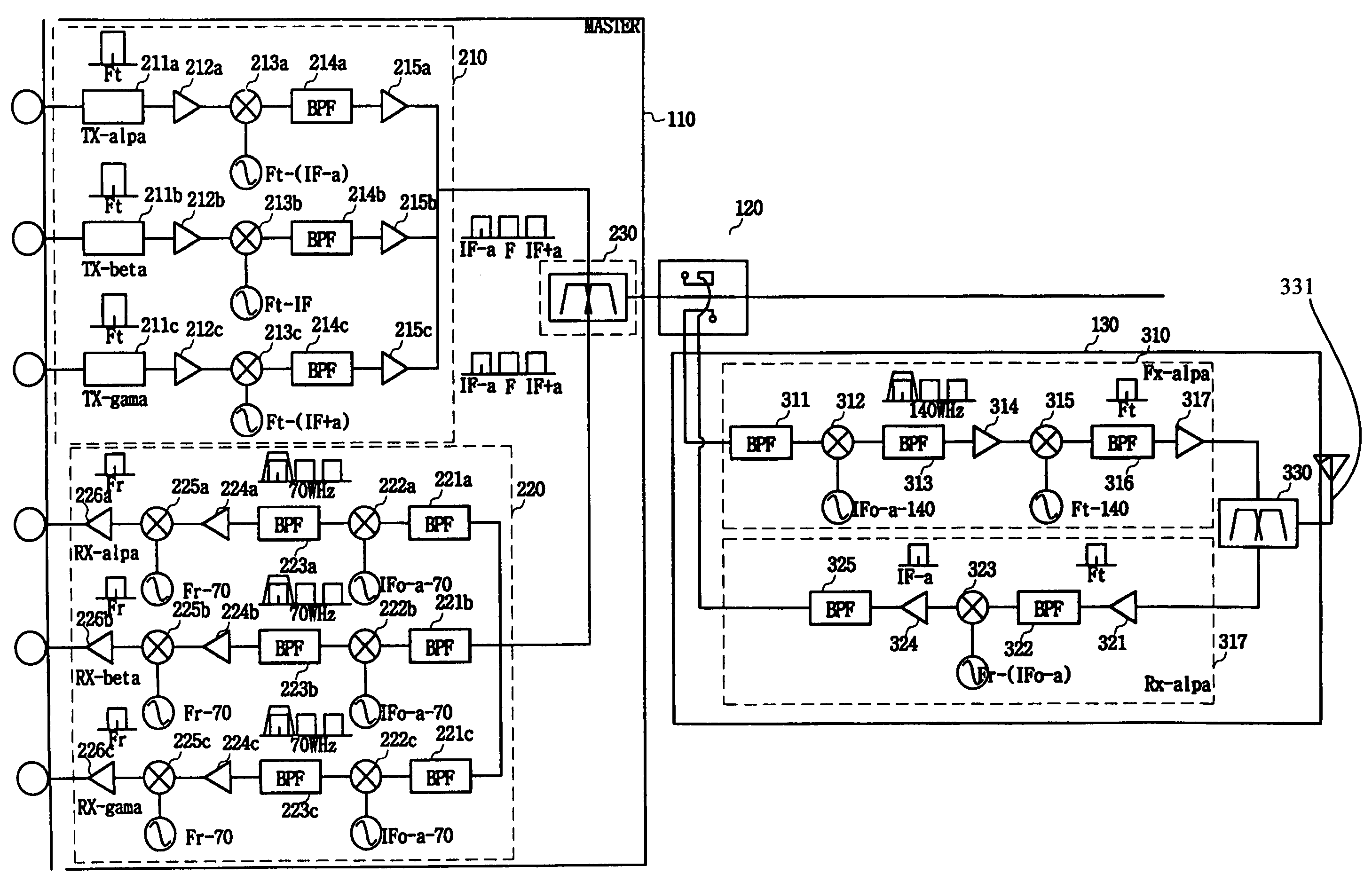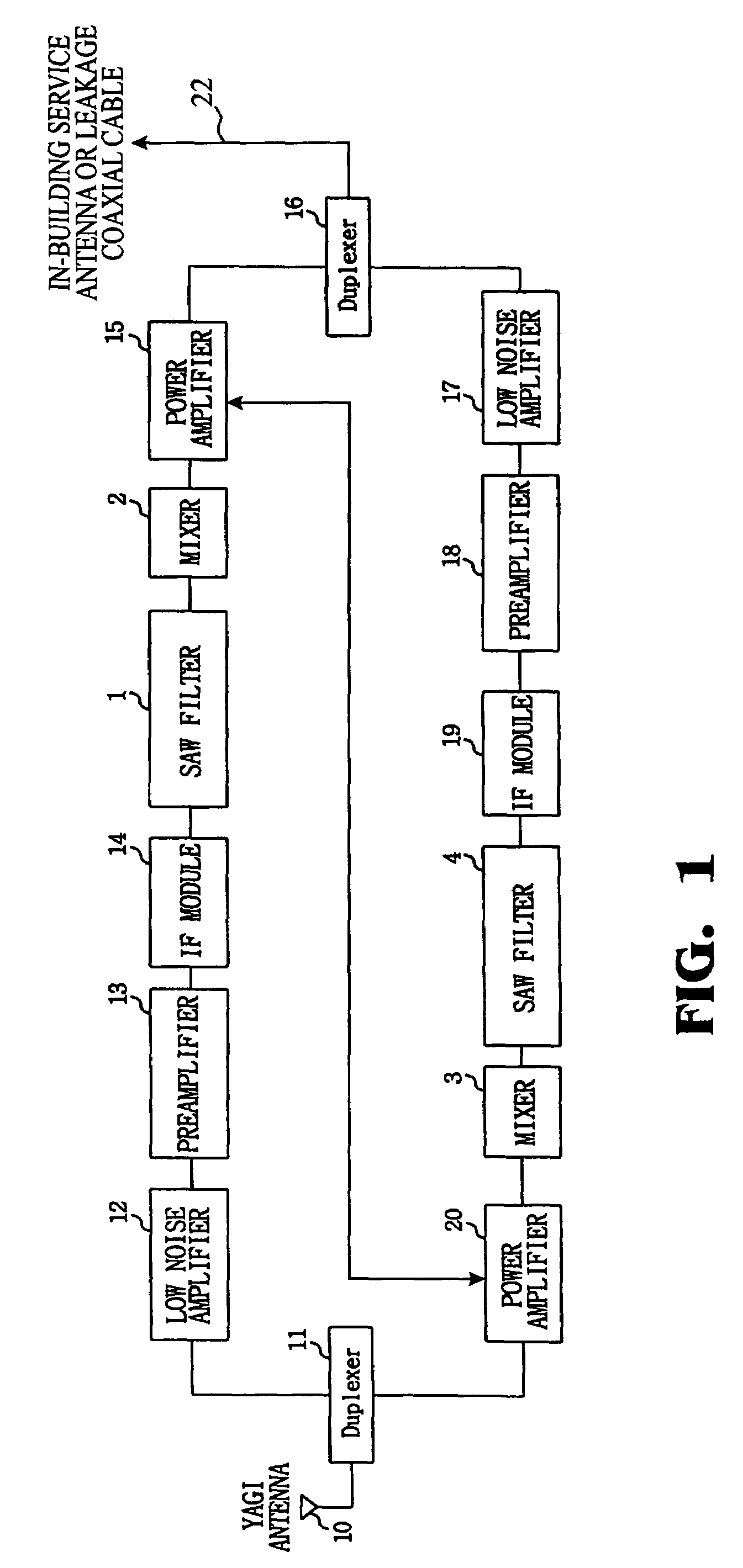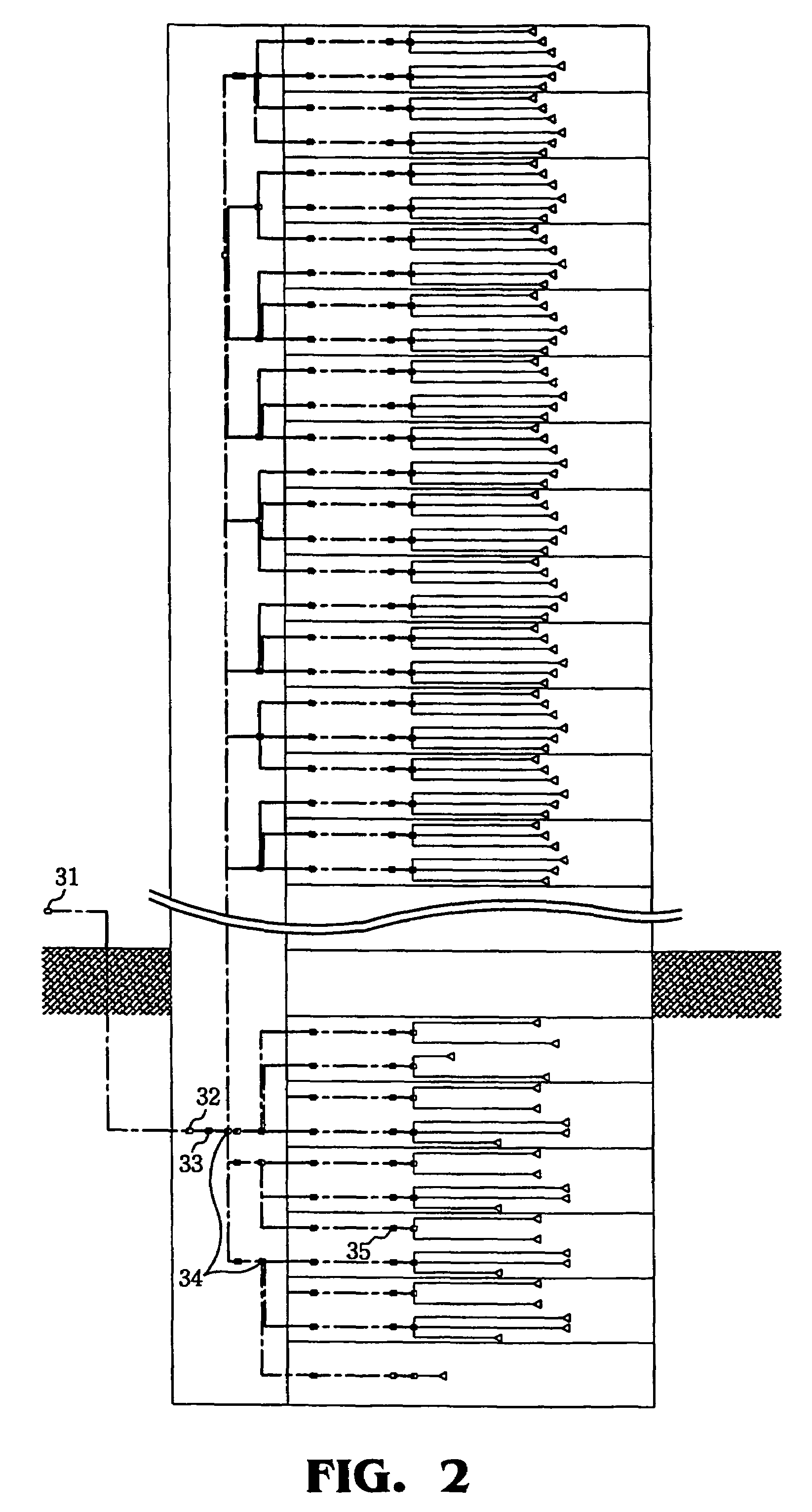Multi-sector in-building repeater
a repeater and multi-sector technology, applied in repeater/relay circuit, baseband system details, transmission monitoring, etc., can solve the problems of limited number of repeaters at the far end, difficult transmission of signals to a distant place, and often occurring transmission loss, so as to increase frequency and sector, the effect of maximizing transmission efficiency
- Summary
- Abstract
- Description
- Claims
- Application Information
AI Technical Summary
Benefits of technology
Problems solved by technology
Method used
Image
Examples
Embodiment Construction
[0049]Turning now to the drawings, FIG. 1 is a structure diagram of an in-building repeater installed in one floor of a building using a CDMA (Code Division Multiple Access) mobile communication system as an example.
[0050]As shown in FIG. 1, the in-building repeater includes duplexers 11 and 16, low noise amplifiers 12 and 17, preamplifiers 13 and 18, intermediate-frequency modules 14 and 19, surface acoustic wave (SAW) filters 1 and 4, mixers 2 and 3, and power amplifier 15.
[0051]Operating principles of the in-building repeater with the above configuration are explained below.
[0052]When a high frequency signal is received from a base station through a Yagi antenna 10, the received signal is transmitted to the low noise amplifier 12 in the transmission direction through the duplexer 11.
[0053]Then, low noise amplifier 12 and preamplifier 13 amplify the signal, and intermediate-frequency (IF) module 14 converts the amplified signal into an intermediate frequency signal.
[0054]Next, SAW...
PUM
 Login to View More
Login to View More Abstract
Description
Claims
Application Information
 Login to View More
Login to View More - R&D
- Intellectual Property
- Life Sciences
- Materials
- Tech Scout
- Unparalleled Data Quality
- Higher Quality Content
- 60% Fewer Hallucinations
Browse by: Latest US Patents, China's latest patents, Technical Efficacy Thesaurus, Application Domain, Technology Topic, Popular Technical Reports.
© 2025 PatSnap. All rights reserved.Legal|Privacy policy|Modern Slavery Act Transparency Statement|Sitemap|About US| Contact US: help@patsnap.com



